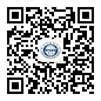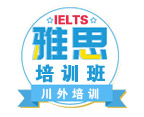托福阅读正误判断题解析方法
2013-12-09 15:43 | 编辑:川外教育 来自:未知正误判断题(True or False)是考查读者根据文章中阐明的信息,判断什么信息是正确的,什么信息是错误的或文章中没有提到的。考生的任务是在文章中找到相关信息,从而证实四个选项中有三个是正确的,并且/或者有一个选项是错误的。
例题:
…Although we now tend to refer to the various crafts according to the materials used to construct them-clay, glass, wood, fiber, and metal-it was once common to think of crafts in terms of function, which led to their being known as the “applied arts.” Approaching crafts from the point of view of function, we can divide them into simple categories: containers, shelters, and supports. There is no way around the fact that containers, shelters, and supports must be functional. The applied arts are thus bound by the laws of physics, which pertain to both the materials used in their making and the substances and things to be contained, supported, and sheltered. These laws are universal in their application, regardless of cultural beliefs, geography, or climate. If a pot has no bottom or has large openings in its sides, it could hardly be considered a container in any traditional sense…
The passage discusses applied-art objects in relation to all of the following EXCEPT
A. the techniques used in their construction
B. the ways they have been classified
C. their function
D. the universality of the laws that govern them
上一篇:托福写作定律切忌避免走入误区
下一篇:托福口语六道考题如何各个击破

- [焦点] 携带全球胜任力 与2025一起新出发
- [焦点] 雅思6.5分:迈向国际舞台的坚实基
- [焦点] 雅思备考黄金期揭秘:几个月最合适
- [焦点] 揭秘雅思写作高分秘籍:素材积累与
- [焦点] 写作秘籍大放送!雅思写作提分,我
- [焦点] 雅思写作逆袭指南:解锁小作文,告
- [焦点] 官方秘籍:如何摆脱“雅思紧张体质
- [焦点] 雅思听力高分秘籍:避开陷阱,轻松
- [焦点] 雅思破7全攻略:不收藏后悔一年!
- [焦点] 8月雅思高分秘籍大公开!你准备好











